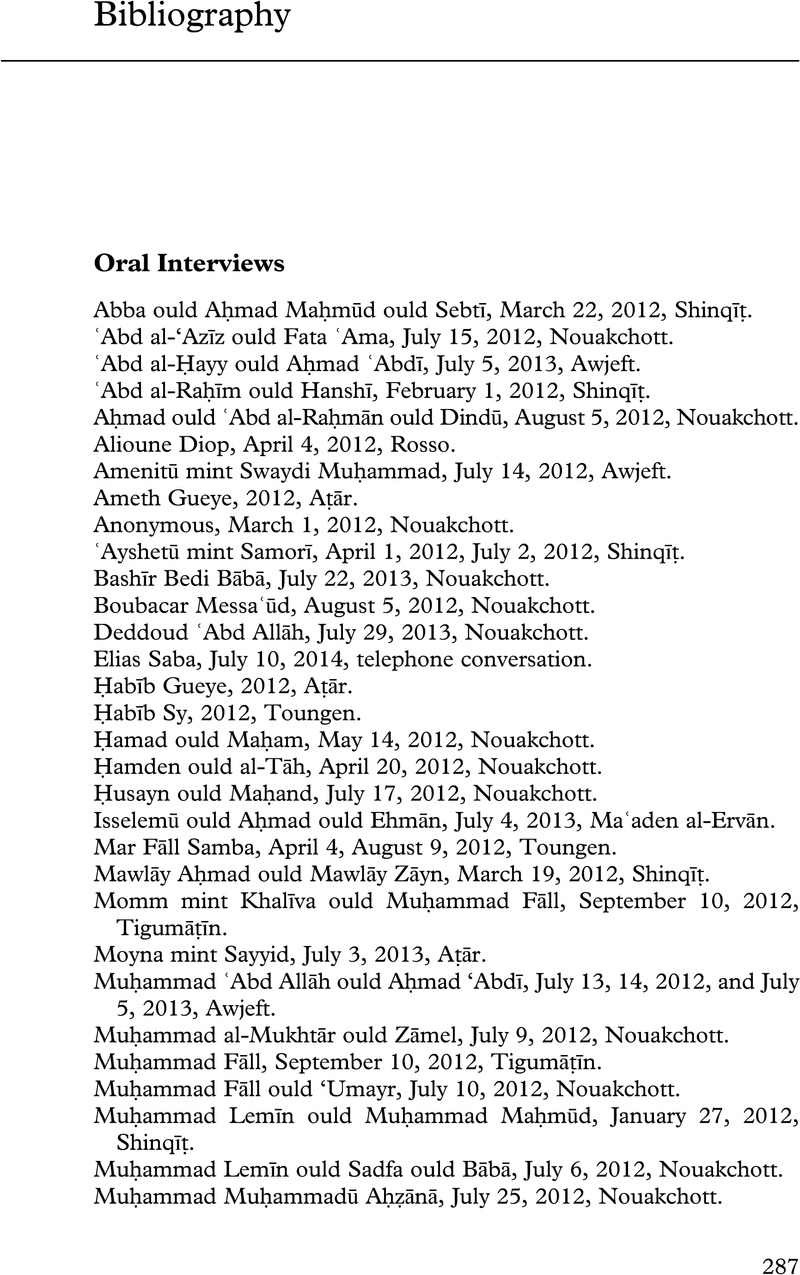Book contents
- Invoking the Invisible in the Sahara
- African Studies Series
- Invoking the Invisible in the Sahara
- Copyright page
- Epigraph
- Dedication
- Contents
- Illustrations
- Acknowledgments
- Notes on Orthography and Translation
- Abbreviations
- Introduction
- Part I Knowledge and Authority in Precolonial Contexts
- Part II Rupture, Consonance, and Innovation in Colonial and Postcolonial Mauritania
- Part III Articulating Race, Gender, and Social Difference through the Esoteric Sciences
- Glossary
- Bibliography
- Index
- African Studies Series
- References
Bibliography
Published online by Cambridge University Press: 19 January 2023
- Invoking the Invisible in the Sahara
- African Studies Series
- Invoking the Invisible in the Sahara
- Copyright page
- Epigraph
- Dedication
- Contents
- Illustrations
- Acknowledgments
- Notes on Orthography and Translation
- Abbreviations
- Introduction
- Part I Knowledge and Authority in Precolonial Contexts
- Part II Rupture, Consonance, and Innovation in Colonial and Postcolonial Mauritania
- Part III Articulating Race, Gender, and Social Difference through the Esoteric Sciences
- Glossary
- Bibliography
- Index
- African Studies Series
- References
Summary

- Type
- Chapter
- Information
- Invoking the Invisible in the SaharaIslam, Spiritual Mediation, and Social Change, pp. 287 - 324Publisher: Cambridge University PressPrint publication year: 2023



